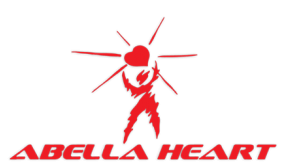Vein Ablation
A reliable treatment for varicose veinsThe Procedure
Vein ablation uses radio frequency to completely remove varicose and spider veins. A catheter enters the vein thru a tiny cut in the skin and is pushed in to the end of the vein. As the catheter is pulled back out, a radio frequency is activated. This frequency causes the vein to collapse and eventually to be absorbed by the body. Vein ablation takes about an hour to complete and causes no scarring and little or no pain. Some patients experience an immediate relief of their symptoms.
Healing time for Vein Ablation varies. However, our staff will provide you with post-treatment care information. You can return to your regular activities right after your vein treatment. To promote healthy blood circulation, it’s advisable to incorporate short walks into your routine every couple of hours.
By following these guidelines, you can ensure a smooth recovery process. Remember, our team is always here to support you with any questions or concerns you may have during your healing journey.
30 million people have symptomatic varicose vein disease.
Leg pain, throbbing and heaviness are good indicators that you should see a specialist.
Why Should I Get Treatment?
Damage or disease in leg vein valves can lead to a variety of problems, like varicose veins. Varicose veins can be painful, and may indicate a more serious condition: venous reflux disease, also known as chronic venous insufficiency (CVI). The chief characteristic of this condition is that the valves in the legs become damaged or diseased.
Dr. Abella and Abella Heart serve Miami, Coral Gables, Kendall and more. See how our vein care professionals can help you! Visit our clinic.
When venous reflux disease is left untreated, vein valves eventually do not close properly. This is what can cause varicose veins, and a number of other problems:
- Leg pain, cramping
- Leg or ankle swelling
- Leg heaviness or fatigue
- Skin changes
- Ulcers, sores, open wounds
Contact Us Today for a Consultation: 305.901.7606
Learn about the best treatment options for you.
Other options include:
Learn
Deep Vein Thrombosis (DVT)
Deep vein thrombosis refers to a blood clot in the large veins in the leg or pelvis. The three most common reasons for DVT are inflammation or damage of a vein’s inner lining, blood that clots quickly, and slow blood flow. Critical veins run through the pelvis into...
Venous Insufficiency Ulcers
Venous insufficiency has a variety of symptoms, one of the worst being venous ulcers. Venous ulcers have several names, including stasis, insufficiency, or varicose ulcers. What do venous ulcers look like? There are a few different stages of venous insufficiency...
Leg Cramps and Venous Disease
Almost all of us have experienced a painful tightening of the calf muscles, which is called a cramp. Also called charley horses, these unpleasant experiences often come about during exercise, but can also happen as a result of venous disease and other health...
